 |
|
I would like to share with you a place which I think is one of Ecuador's best kept secrets.
It is a marine island park where one can see large colonies of Frigate birds, Blue-footed Boobies, Masked Boobies, the Waved Albatross, the Red-billed Tropicbird, Dolphins, Humpback whales and more. While this sounds like the Galapagos Islands, the Galapagos are hardly a secret and well, I've not met anyone who has seen Humpback whales around the Galapagos Islands. |
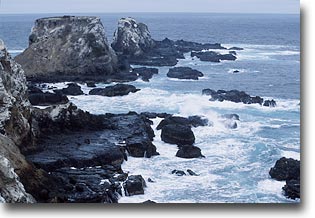 |
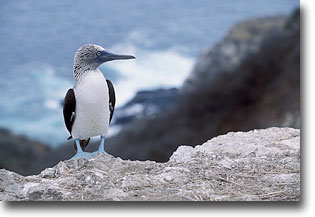 |
The park is Machalilla National park located along the western coast of central Ecuador. The park not only includes a large area of land, but it is also a marine park and includes "Isla de la Plata" or Silver Island.
If you read guide books they will often refer to Isla de la Plata as a poor man's Galapagos. The truth is that a day trip to Isla de la Plata is an amazing experience that really is quite a bargain.
|
|
There are several ways to get out to Isla de la plata and Puerto Lopez is probably the best place to begin your journey.
Once you enter the town of Puerto Lopez, you will be bombarded by tour operators who will ask you if you want to go see the whales. We went with on the "Amazing I" run by Amazing Tours. The boat is supposedly one of the fastest and we seemed to spend more time out at the island than other groups. Another boat that looked nice though was the "Pacifico" operated by the Club Pacifico Hotel. |
 |
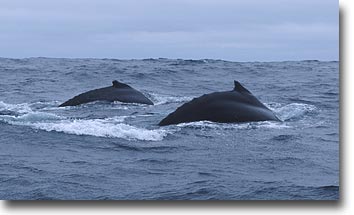 |
From May to October one will find Humpback whales several miles off the coast of Ecuador and they really are quite an attraction to see.
When we arrived within viewing distance of the whales, we slowed down and then drifted in the water to observe them for a while. Since I am a photographer, I was given the opportunity to be in the first group to climb on the roof for a better view. It seemed to be a great idea at the time. |
|
Well it wasn't that it was a bad idea, rather we didn't have a real calm day and the swells were large enough that it was impossible to stand on the roof and near impossible to stay on your knees.
You can of course hang on or wrap your arms around the railing to keep your balance, but you can't exactly take pictures at the same time. I didn't get any shots from the roof, But I did manage to really feel seasick. Fortunately for the passangers below, I was able to get off of the roof before sharing my breakfast with the whales so to speak. |
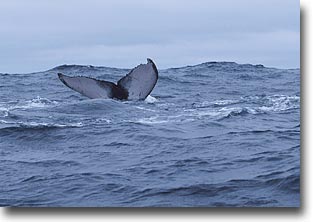 |
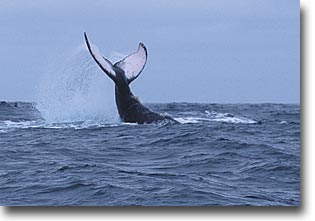 |
The other passengers felt my throwing up was actually bringing the whales in closer, so they encouraged me to keep throwing up.
I remember very little other than seeing two whales really close to the boat, putting my glasses back on and getting two frames of the two whales arching their backs out of the water. I was really hoping to see the young ones breech or jump practically out of the water. As luck would have it, the day before, the whales were jumping some and the day after was absolutely unbelievable. We did get to see one whale raise it's tail way out of the water and then slap the surface a couple times. |
|
After a lunch break at the marine park entrance, we climbed up a trail to the top of the island and very soon encountered Blue-footed Boobies walking along our path.
I really enjoy observing and photographing wildlife. It really is hard however to describe what it feels like the first time you get to observe a new animal up-close. |
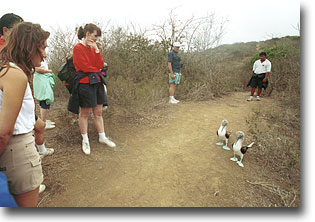 |
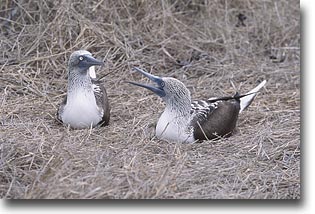 |
All I can say is that Blue-footed Boobies are really fun to watch and photograph. The male and female whistle and honk at each other and put on quite a display.
|
|
While Blue footed boobies look identical at first glance, the female Blue-footed booby is generally larger and has slighty deeper blue feet than the male. The easiest way to differentiate by sight however is to look at their eyes. The female Blue-footed Booby has a larger pupil than the male. |
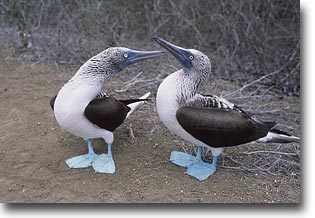 |
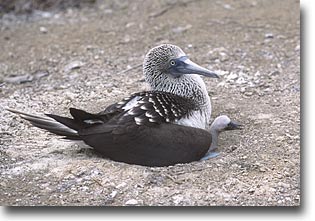 |
The great thing about photographing wildlife on Isla de la Plata is that the birds are easily approachable. Quite often the Blue-footed Booby will build it's nest right on the trail. However, the park rangers will sometimes close portions of the trail to give a bit of privacy to newborn chicks. |
| From the top of the cliffs, you can look down below and see many more Blue-footed Boobies gathered along the ocean's edge. |

|
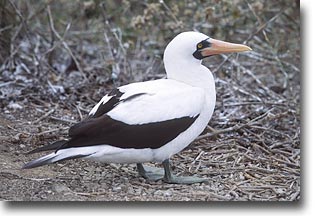 |
Of course there are other sea birds living and nesting on Isla de la Plata such as the Masked Booby |
|
The waved Albatross is a bird that reportedly can live at sea for years without ever landing on dry ground. A few pairs of the magnificent birds nest on Isla de la Plata. The only other place in the world you can see them nesting is on the Galapagos Islands.
Because of this, we were kept a reasonable distance away and silently viewed this rare sight. |
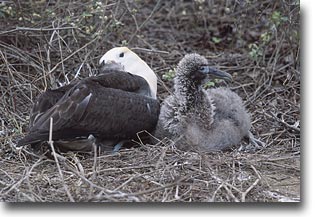 |
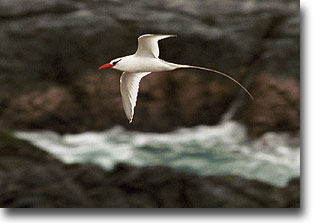 |
Another amazing sight is the Red-billed Tropicbird that can be seen flying along the ocean cliffs. It is instantly identified by it's red beak and long tail.
The island is also home to a large colony of frigate birds nesting in trees, but time did not allow us to hike up to get a closer look. |
|
As we traveled home, I could not help but be amazed at an incredible day of seeing wildlife up-close. While Isla de la Plata is obviously overshadowed by the enchanted Galapagos Islands, the experience is really no less impressive. It is a a real bargain for anyone visiting Ecuador who wants to see whales or is unable to travel to the Galapagos during their trip. And it is certainly one of the best day trips you can experience anywhere in Ecuador. |
 |